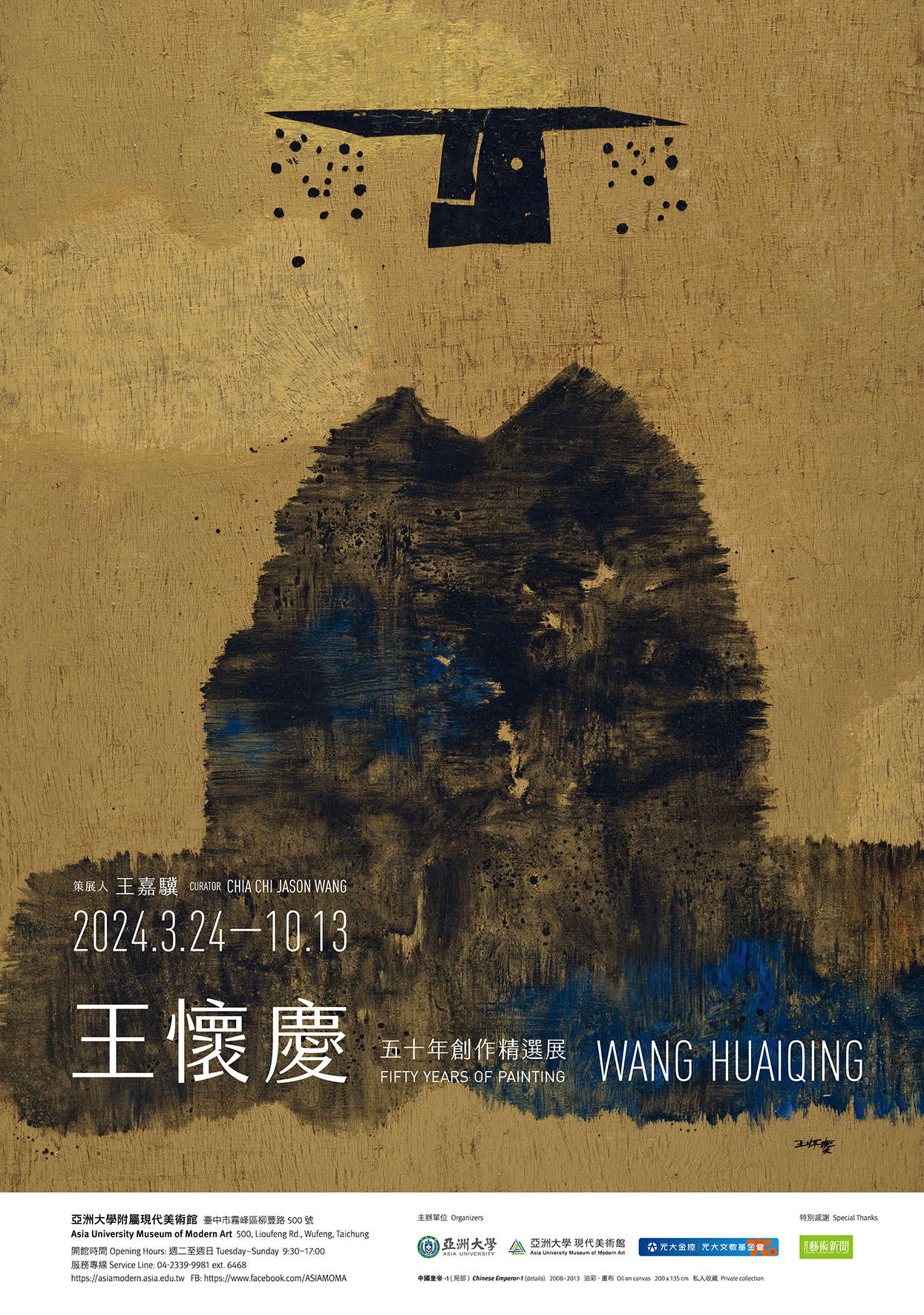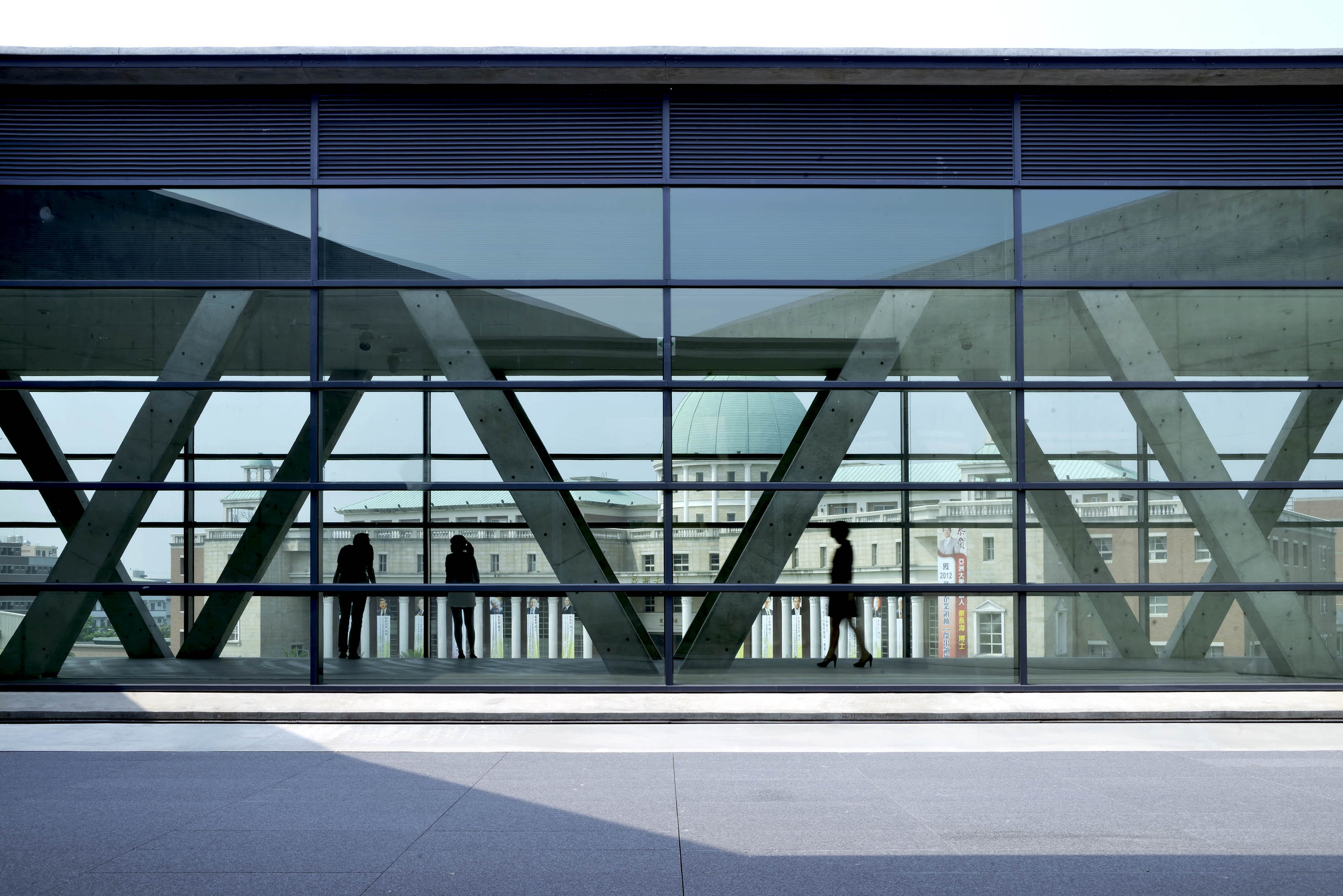王怀庆:五十年创作精选展
策展人:王嘉骥 (Chia Chi Jason Wang)
展览导言
「王怀庆:五十年创作精选展」以中国艺术家王怀庆(1944 年生)1970 年代至近期的作品为展览内容,精选他 50 年来具有代表性的作品。
“Wang Huaiqing: Fifty Years of Painting” cherry-picks the representative works of contemporary Chinese artist Wang Huaiqing (b. 1944) in his 50 years of practice from the 1970s to date.
王怀庆自幼生长于北京。1964年,考入中央工艺美术学院(今之北京清华大学美术学院)就读。不久,文化大革命(1966-1976)爆发,学校师生被迫下乡劳动改造;课业中断,直到 1971 年毕业。1975 年至 1978 年,受分配担任舞台美术设计工作之馀,他已开始创作油画,兼及连环画与插图制作。
Born in Beijing, Wang Huaiqing was admitted to the Central Academy of Arts and Crafts (Academy of Arts and Design, Tsinghua University, Beijing today) in 1964. Before long, the Cultural Revolution (1966-1976) erupted, during which students and faculties were forced to labor for reform in the countryside. Hence, all the studies were put on a halt, so Wang could not graduate until 1971. From 1975 to 1978, apart from the assigned work of stage design, he had begun working with oil paint, along with practices in serial pictures and book illustration.
1979 年,他再考入中央工艺美院研究生学程,进一步师事绘画名家吴冠中 (1919-2010),深受肯定与赏识。1980 年代初期,王怀庆开始展露头角,崛起于中国艺坛。前期,受惠于学院训练,他的画风以写实主义取胜,擅长历史和社会生活题材。1980 年代中期,他从中国江南地区,尤其是徽派黑瓦白墙的建筑特色,获得灵感,转向不规则几何形式的风景绘画。
In 1979, he advanced to the graduate program of
进入 1990 年代,他从明式家具的木制榫卯结构,找到可资取用的造形资源。拆 解构造,再以视觉构成的方式,于画面上重新拼组、联结,或是并置、排列那些已经解离、散逸的木质构件——借此手段,王怀庆确立了个人独特的艺术风格。除了以油彩为媒介,他也创作水墨绘画。同时,他更自觉地为自己的艺术注入文化意涵;借有形且实存的现实物件,隐喻中国当代社会相对于历史传统的断裂,赋予重建及再衔接的深刻寓意。王怀庆稍早已见的不规则几何语汇,来到此一时期,更显着地演变为一种介于抽象和具象之间的表现主义特色。
Entering the 1990s, he found inspirational formal resources from the wooden structure of mortise and tenon in the Ming-style furniture. Deconstructing the structure, the artist reassembled and joined visually over canvas or juxtaposed and arranged those wooden components that had deconstructed or scattered—Wang Huaiqing hence established an art style unique to his own. In addition to oil paint as his medium, he also worked with ink painting. In the meantime, he imbued cultural meanings into his art practice more consciously. Through tangible, real objects perceived from reality, he connoted the fractures of the contemporary society of China from its history and tradition as well as imparted profound senses of reconstruction and reconnection. The irregular geometrical lexicon observed in Wang’s earlier practice by then had evolved significantly into an expressionist trait betwixt abstractionism and figurativism.
不单单只是明式家具,王怀庆还从中国艺术与物质文化的历史,深掘其他值得拓展的形式元素或母题,具体导入绘画,表露个人的文化与历史观。不仅如此,他也尝试在油画当中,表现水墨的质感及审美趣味,亦灌注具有书法韵致的美学。反映传统中国文化的精神及独特性,这一直是王怀庆创作极为重要的精神内核。中国书画史也是他触手可及的重要形式源头。《夜宴图》系列 (1998-2006)和《中国皇帝》系列(2008-2016)是其中两个显着的案例,可以看出艺术家挪借画史名作,予以创新和改造,亦融入个人哲思,激发跨越历史时空的对话,形成别具一格的咏史或怀古的表现。
Beside the Ming-style furniture, Wang Huaiqing excavated other formal elements or motifs worthy of development from the histories of Chinese arts and material culture as well, vividly introducing them into painting and manifesting personal views on culture and history. Furthermore, he also experimented presenting the texture and beauty of ink in oil painting. Meanwhile, he also infused the aesthetics rich in the sense of Chinese calligraphy. Reflecting the spirit and specialty of the traditional Chinese culture had always been the crucial spiritual core in Wang’s practice. The history of Chinese calligraphy and painting was a vital formal source he could draw inspirations from as well.
王怀庆以创造性的托古和改制作为手段,搭起自己与传统重新对接的通道。文人书画所标榜的笔墨,经过他的揣摩与转化,也以全新的方式,体现为个人独特的艺术语风。与传统十分不同的是,文人书法性的用笔大多属于手腕与指间的运转及调控,王怀庆将其力度与格局放大,延伸为巨大尺幅,改以身体的动势,于画面上或画幅中行走。原本,可能是书法家运笔过程中,偶然留下的飞白墨迹;如今,王怀庆以全身性的运动,在超过真人大小的画作里,留下了有如天马行空的视觉奇观。简而言之,他将书法的笔划扩大,凝结为更富于当代面貌的抽象构成。
By means of creative reformation based on legacy, Wang Huaiqing built a bridge to reconnect himself with tradition. The brush-and-ink (bimo) known in the literati calligraphy and painting, after his study and transformation, were made into a whole new style unique to his artistic dialect. Rather distinct from the traditional approach, in which the calligraphic brush wielded by literati stressed on the operation and manipulation between the wrist and fingers, Wang amplified the force and scale for enormous pictures, shifting the practice to a promenade over canvas or within frame through bodily dynamic. The sporadic traces of swift stroke left by Chinese calligraphers in writing originally was elevated by Wang Huaiqing via whole-body movement into an unbridled visual wonder on paintings larger than life. In a nutshell, the artist magnified calligraphic strokes, crystalizing such into an abstract composition richer in the contemporary outlooks.
「王怀庆:五十年创作精选展」爬梳艺术家各个时期的特色和精华之作,尤其以台湾各大机构与收藏家蓄聚多年的珍品,作为选件和邀请对象。因应亚洲大学现代美术馆各个展厅的空间特质,总计展出的绘画及立体作品近 50 件。透过此次展览,期盼爱好当代艺术的社会大众,得以一窥王怀庆艺术生涯的发展及其堂奥。
“Wang Huaiqing: Fifty Years of Painting” combs through the works of characteristics and highlights across the artist’s various stages, featuring especially the cherished pieces from the collections of major institutions and collectors in Taiwan that have been acquired or collected for years as the selected and invited works. In response to the spatial attributes of the galleries at Asia University Museum of Modern Art, nearly 50 pieces of paintings and sculptural works in total are presented. Through this exhibition, we endeavor to offer the crowd fond of contemporary art a glimpse at the artistic locus and quintessence of Wang Huaiqing.



